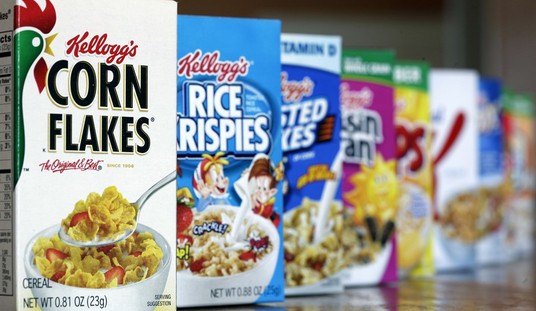In the late 1970’s and early 1980’s, inflation became a crippling detriment to the American Economy. Federal Reserve Chairman, Paul Volker, showed remarkable patriotism for a Democrat. He brought down the hammer athwart this scourge. He raised interest rates through the roof and forced down the price of most consumables to acceptable levels. As a result of Paul Volker’s courage and love for America, the fixed-income consumer was temporarily spared great misery and deprivation.
Of course Fed Chairman Volker’s policy decisions were kryptonite to elected officialdom. They solved a long-term Seldon-Crisis of political economy with little or no concern for short-term public opinion. The primary measure that set off Paul Volker’s alarm system was the CPI (Consumer Price Index). Sadly, the CPI referenced today would not mathematically map to the CPI Volker relied upon back in the day. Therein lies a tale of statistical machination and nerdacious skullduggery.
The base CPI data is collected by the Bureau of Labor Statistics using an exhaustive survey. Details follow below.
The CPIs are based on prices of food, clothing, shelter, and fuels, transportation fares, charges for doctors’ and dentists’ services, drugs, and other goods and services that people buy for day-to-day living. Prices are collected each month in 87 urban areas across the country from about 4,000 housing units and approximately 26,000 retail establishments-department stores, supermarkets, hospitals, filling stations, and other types of stores and service establishments.
(BLS ObCit)
If the BLS just stopped at using the data they got from the surveys, their numbers this month would map to the same CPI that Paul Volker used as a decision point. Yet soon after Volker solved our nation’s inflationary crisis, the mathematical calculation of the CPI underwent alterations that resulted in a reduction of the calculated values.
The old, Volker-Era CPI strictly measured price level. Michael Boskin (Bush I Budget Director) and Alan Greenspan decided that this direct comparison of surveys was too mathematically naïve to accurately measure inflation. Thus, they argued for the inclusion of substitution effects. At this point, they were measuring relative rather than absolute inflation. President Bill Clinton enthusiatically agreed. His BLS put this new measure into effect.
At this point, in order to effectively calculate what I’ll refer to as CPI*, they claim sufficient knowledge of consumer ability and preference to produce an estimator of how people would react to a real change in price level. This dampens inflation measured by CPI* to the extent that a consumer was willing to reduce his utility against a higher price level. The statistical mind-reading implicit in CPI* regrettably camouflages higher price levels.
At this point, the BLS had a data normalization problem. They were forced to account for qualitative preference using quantitative measures. The BLS had no opinion surveys to gauge elasticity of demand for CPI components, so they presumably used prior research to model these effects. They could then use weighting factors to downshift consumer preferences towards cheaper goods as real price levels rose. This mathematically enforced CPI*<= CPI.
Another mathematical conundrum effected CPI*. This happened when they attempted to account for adjustments to the quality of market goods that were not physically measureable with respect to price level. For example, if the government regulated baby cribs to make them safer, the BLS attempted to adjust the price level downward to account for the happiness a new mother would have that her offspring was safer in the new government-approved crib. This got them involved in the very sticky mathematics of quantifying consumer preferences.
Since the BLS had neither the time nor the sample availability to properly compose a Von Neuman preference lottery, they had to guess. They had to guess with no knowledge of how many lower-income mothers would react to the baby crib price increase by making their adorable offspring sleep on the floor wrapped up in a swaddling blanket due to substitution effects. The BLS Hedonic Adjustments are educated guesses, which are probably founded on the best expert opinion available prior to press time. We thus are treated to CPI** (original CPI adjusted both for substitution and hedonic quality factors.)
In fairness to the people who calculate CPI** (or whatever ridiculous notation they use) the cranks and paranoids make outlandish claims. The propriator of Shadowstats.com states that what I call CPI** systematically understates old CPI by 7% per year. I have yet to hear their explanation as to why that hasn’t caused me to live in a cave and hunt wild animals for subsistence yet. However, based upon my own professional training and academic background in Operations Research and Applied Mathematics, I find the current BLS methodologies potentially fallacious for two key reasons.
The most pressing problem comes from the decision to reduce the CPI measures by including a mathematical proxy for economic substitution. I believe that an unbiased estimator of real price level changes is more useful to both citizens and firms than an estimator modified by the BLS’ mathematical attempt to predict substitution patterns. Just tell me the actual change in real price levels and I’ll decide how much hamburger to eat instead of steak. Intentionally rigging up a CPI* that is mathematically forced to behave so that CPI*<=CPI is disingenuous political gamesmanship.
The Hedonic Adjustment problem is more typical of what goes wrong with honest bureaucracy. It’s such a methodological grab-bag of Fuster Cluck that I can’t honestly tell you whether CPI**<=CPI*. My suspicious instincts tell me they play this to political advantage. However, sorting through this dung heap of statistical stupidity is too much work to verify this conjecture. If they don’t have an actual set of Von Nuemann-Morgenstern lotteries to justify claiming that I have ten cents of additional happiness value per gallon of modified clean air gas, they flunk my Intro to Stochastic OR class. Hedonic Adjustments are bravo-sierra.
So we calculate an inflation statistic called CPI. We used to calculate an inflation statistic called CPI. Yet if you attempted to map 1960’s CPI stats to 2010 CPI stats you would find mathematical discontinuities and a ridiculously high margin of error to your estimate. The statistic called CPI does not measure the same thing it measured back before it was dorked with.
This probably means we pay more for the basic necessities of life than our current government is willing to tell us. We now suffer from some level of unofficial inflation that is between 0 and 7%. Is this fatal? Not for me personally. Yet it does contribute to that sense that we just go through an endless cycle of elections to select the next dumb son of a (NSFW) that will stab us all in the back. That is all.













Join the conversation as a VIP Member